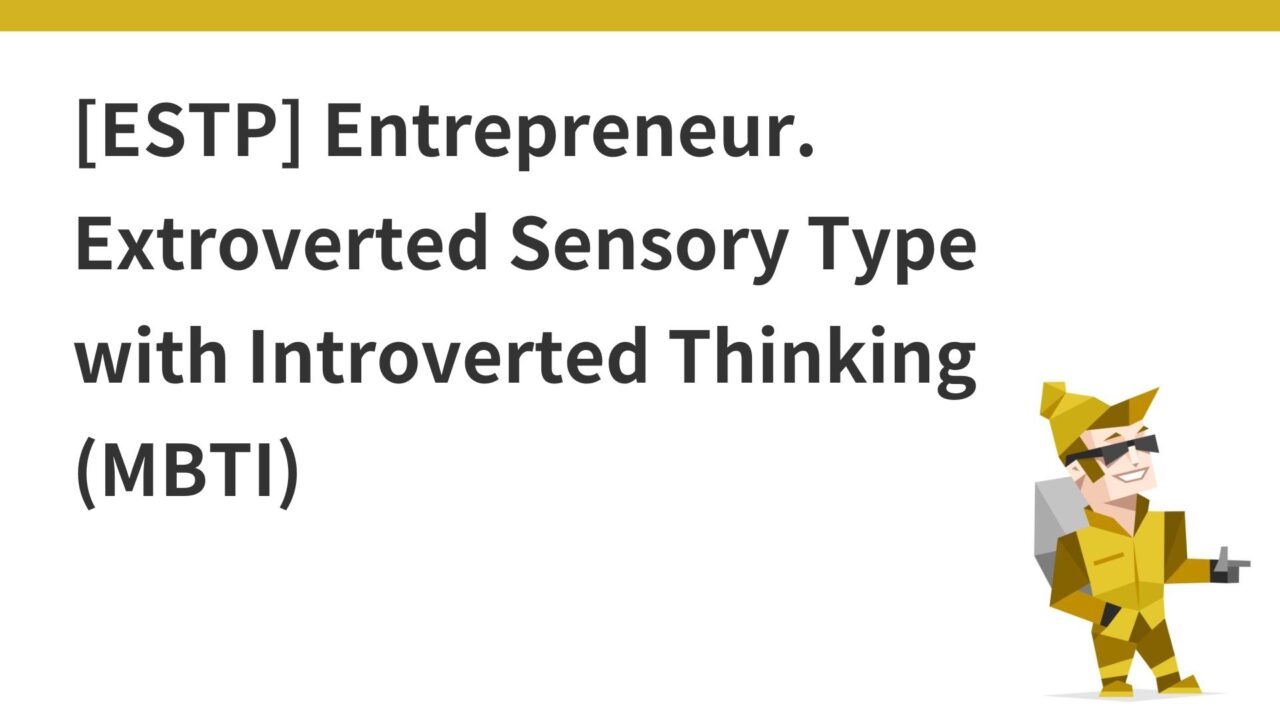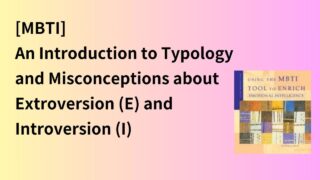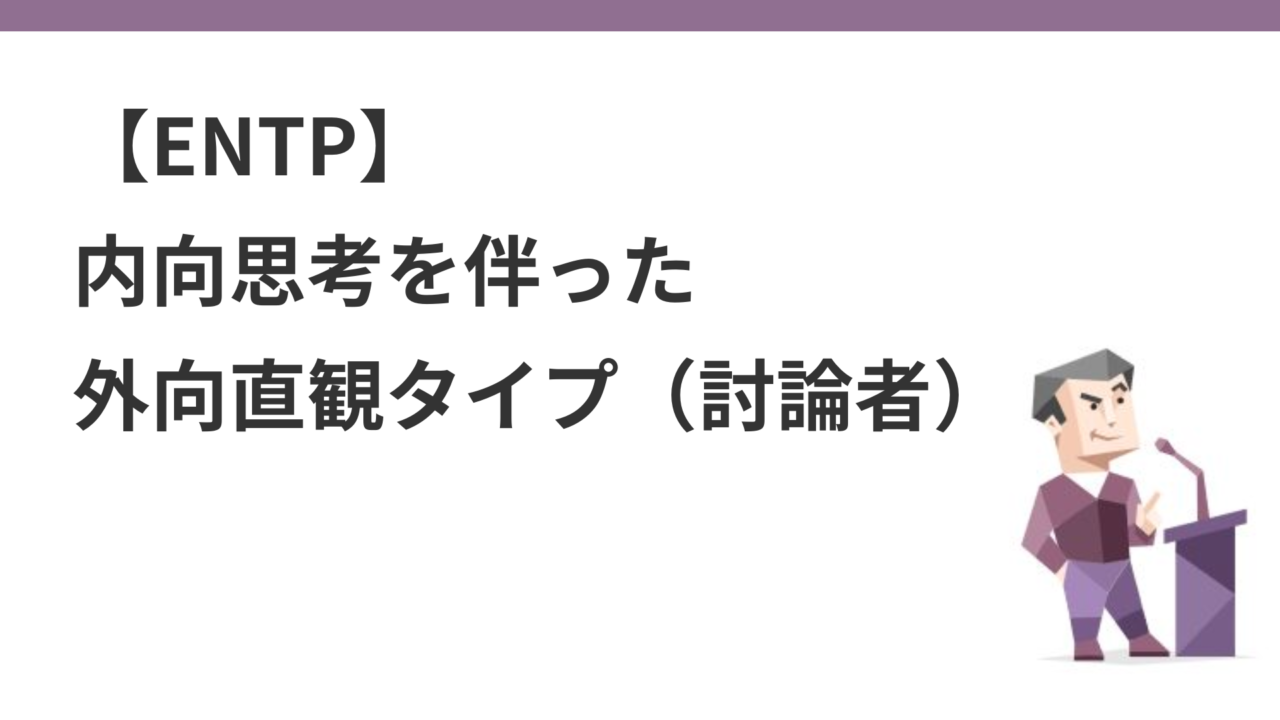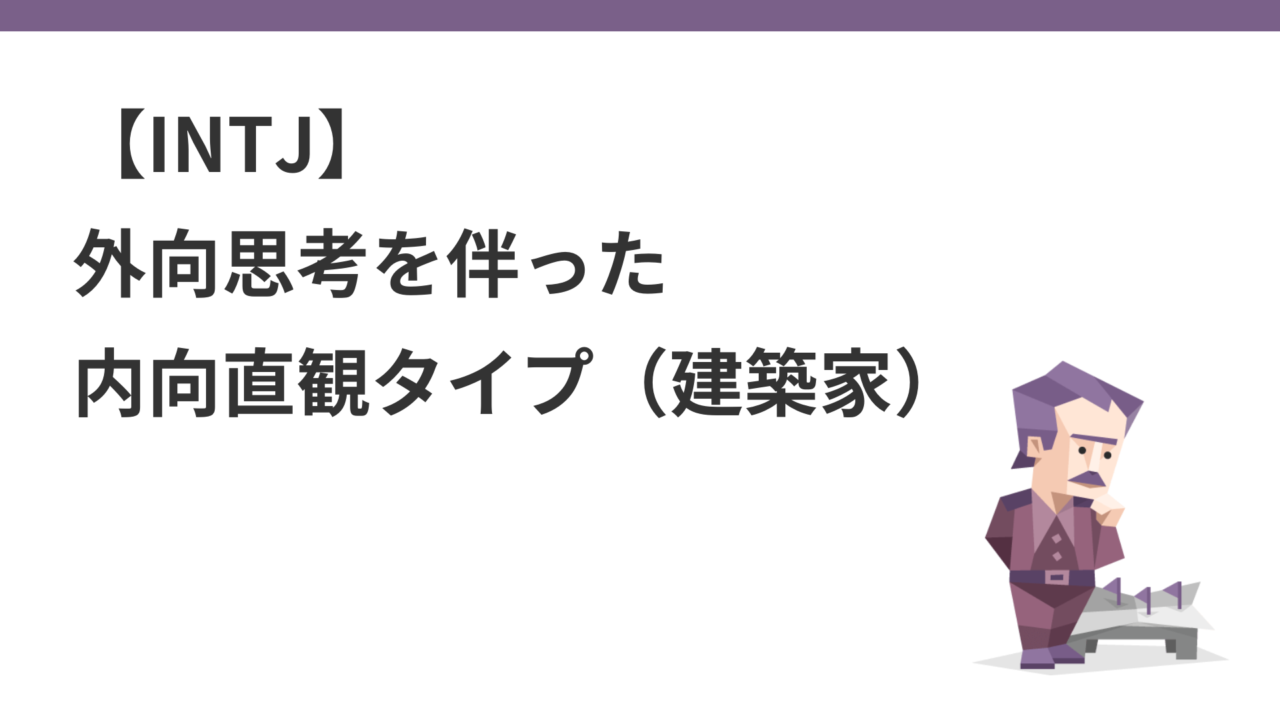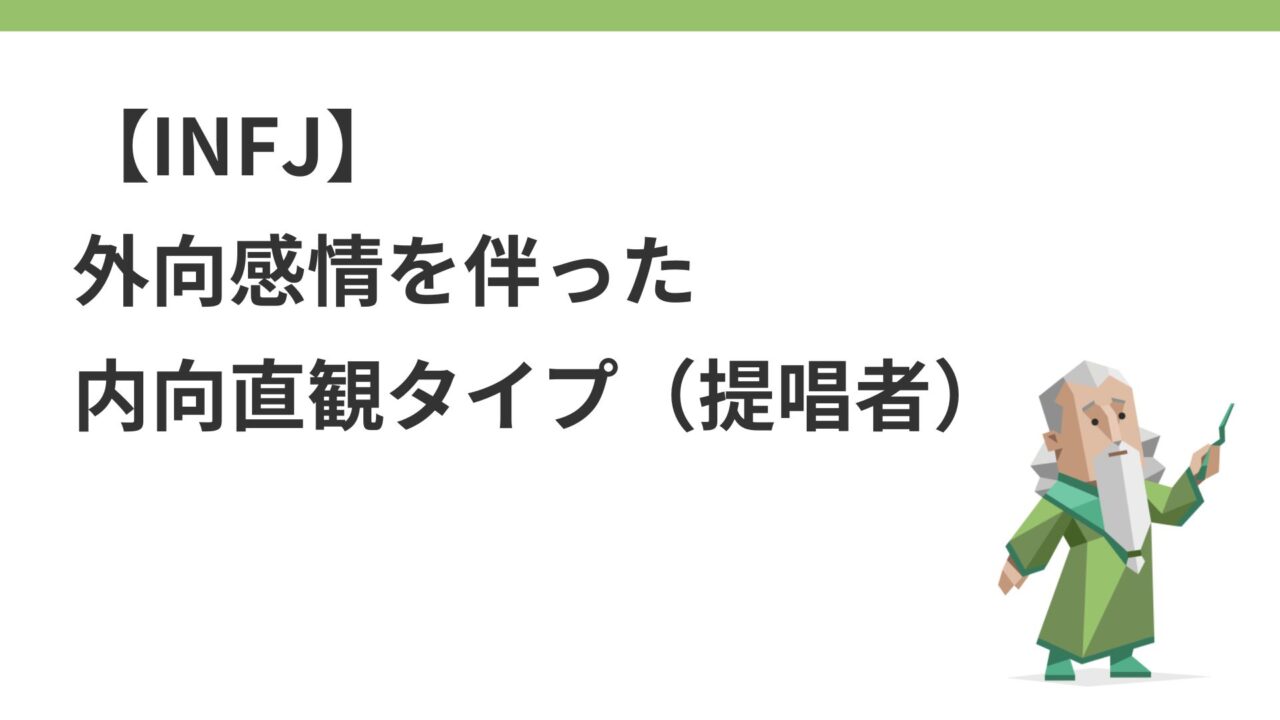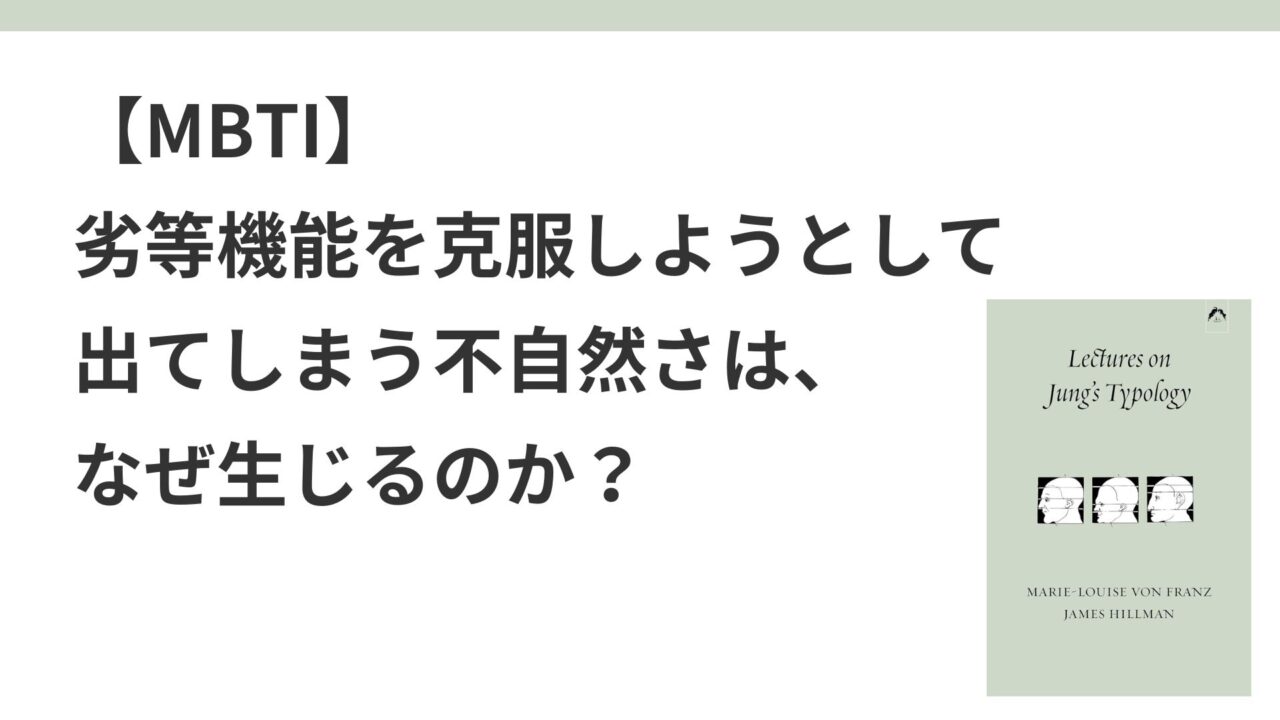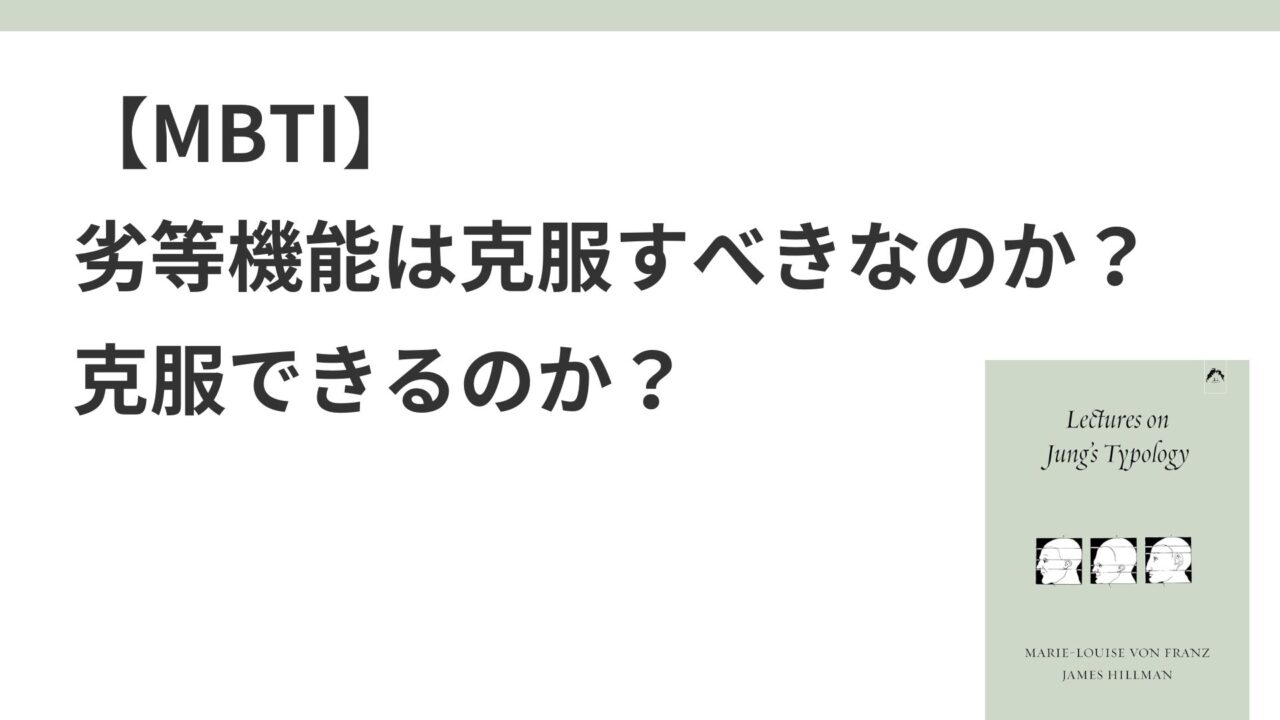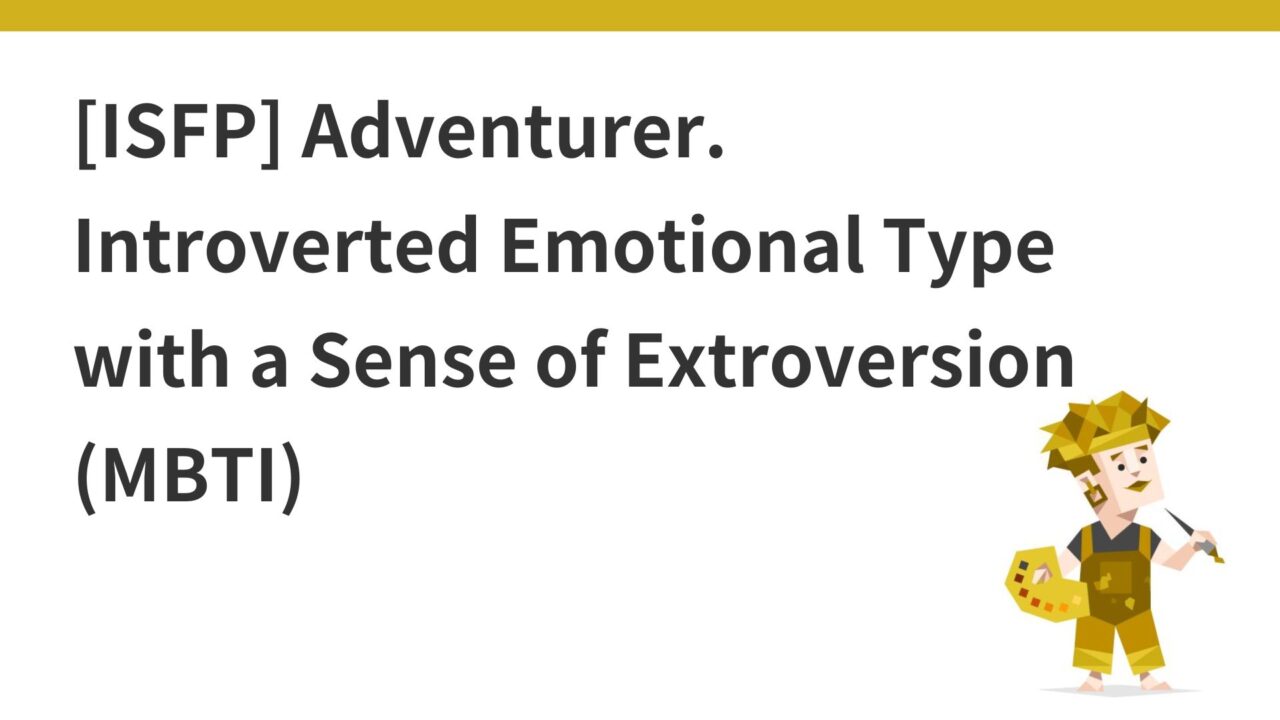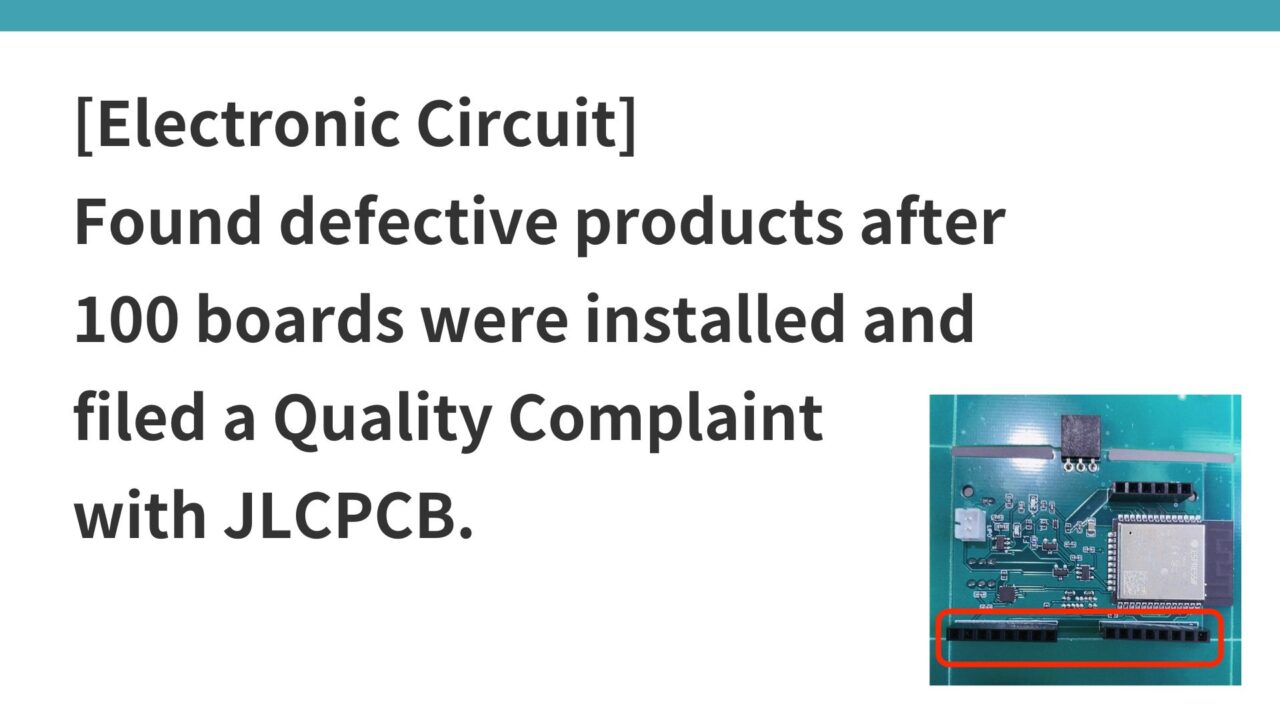- Introduction.
- Public’s impression of ESTP
- Se-Ti: Extroverted sensory type with introverted thinking
- Characteristics and decision-making process for primary and auxiliary functions
- Difference between ESTP and ENTP
- Impression of ESTP’s surroundings
- To strengthen introverted intuition (Ni) of inferior functions
- Communication Features
- Reactions during stress and points for improvement
Introduction.
I will summarize the following perspectives on each MBTI personality type.
- Public Impressions
- Characteristics of the primary and auxiliary functions and the decision-making process
- Impression to the surroundings
- Inferior Functions and How to Enhance Inferior Functions
- Communication Features
- Reactions during stress and points for improvement
In this issue, we discuss ESTP.
Public’s impression of ESTP
If you Google ESTP, related searches include “ESTP entrepreneur,” “ESTP risk fearless,” “ESTP lonely,” “ESTP dispassionate,” and “ESTP psychopath.”
Described as “entrepreneurs,” celebrities include Madonna Jack Nicholson, Eddie Murphy, and Ernest Hemingway.
Se-Ti: Extroverted sensory type with introverted thinking
Cognitive functions of ESTP are in order of development as follows
- Primary function (the function you are most aware of): extroverted sensation (Se)
- Auxiliary functions (functions that function well but are difficult to notice by themselves): introverted thinking (Ti)
- Third function: extraverted affect (Fe)
- Inferior function: introverted intuition (Ni)
The following is a brief description of how each cognitive function affects an individual’s perception and behavior
| cognitive function | Inward (i) | Outgoing (e) |
| Intuition (N) | Pattern recognition – inner insights and future predictions | Explore new possibilities – ideas and abstract concepts |
| Thinking (T) | Logical analysis – building internal theories and organizing thoughts | Objective judgment – decision making for efficiency and fairness |
| Emotion (F) | Deep empathy – a deep understanding of personal feelings and values | Social harmony – forming emotional connections with others |
| Sensation (S) | Details of reality – reflection of inner concrete memories and experiences | Actual experience – direct interaction and action with the outside world |
Se-Ti: Make logical decisions based on information obtained through the five senses.
Characteristics and decision-making process for primary and auxiliary functions
Extroverted sense (Se): realistic responsiveness
Se gives ESTPs the ability to take a realistic and practical approach and respond to situations in a resourceful manner.
Introverted thinking (Ti): logical analysis
Ti provides an internal logical framework for ESTPs to analyze real-life situations dispassionately and to make effective decisions.
When ESTPs work on a new project, they first use their extroverted senses (Se) to quickly assess the reality of the situation and specific details. Direct observation and gathering of the resources needed for the project and the situation on the ground. After assessing the situation, use introverted thinking (Ti) to logically analyze the situation and formulate an effective plan. Find the most effective way to determine how the project should proceed.
Difference between ESTP and ENTP
ESTPs have extroverted sensation (Se) as their primary function and are sensitive to concrete real-life situations and good at taking practical actions. ENTPs, on the other hand, have extroverted intuition (Ne) as their primary function and prefer to explore ideas and possibilities. This allows ESTPs to take a quick and concrete solution to the problem at hand, whereas ENTPs take a creative approach.
Impression of ESTP’s surroundings
- Able to take action: ESTPs are perceived to be agile with a high capacity for immediate action. They are dependable and quick to respond to situations.
- Sociable and personable: ESTPs are sociable and good with people. They are able to quickly open up to new people and establish friendly relationships.
- Realistic and practical: Good at making decisions based on concrete facts and situations and finding practical solutions.
- Adventurous and enjoys challenges: He enjoys new challenges and adventures and is a positive influence on those around him. Always gives the impression of being energetic and active, energizing those around them.
- Impatient and short-tempered: While they are dynamic, they are also impatient and short-tempered. They may not like to plan or make prudent decisions.
- Taking too many risks: Sometimes they appear reckless because they are not afraid to take risks and are willing to try.
- Lack of attention to detail: Sometimes important details are overlooked because the emphasis is on the big picture and not on the details.
- May disregard the opinions of others: Sometimes they are so confident in their own ideas and judgments that they disregard the opinions of others.
- Lack of concern for emotions: sometimes lack of emotional support and concern, can hurt the feelings of others
My impression of ESTP is that it is “hedonistic” in the best sense of the word.
Like ENTPs, they are impatient and quick-witted, but what differentiates them from ENTPs is that they are more realistic and take action as soon as they think of it, which is even higher than ENTPs. He was probably high in the school caste in junior high and high school. He is a kind and friendly bossy person who takes care of his students in any way.
Because of his Ti auxiliary function, he has an image of a simple and straightforward personality, with a direct and direct manner. Although he may sometimes clash with others because of this, he rarely lets it get to him.
I am able to enjoy the “here and now” with the people around me, and I can instinctively adjust to changing circumstances as they arise because I am flexible and responsive to real situations. Although I am haphazard, I am not afraid of things and think while moving anyway. He sometimes takes sudden, unplanned actions that involve others, which can be confusing for them. He also hates wasting time.
In terms of the degree to which I am enjoying life, I would say that I am in first or second place in MBTI.
To strengthen introverted intuition (Ni) of inferior functions
ESTP is relatively the least developed in introverted intuition (Ni), a recessive function.
Introverted intuition is the ability to gain inner insight and a deep understanding of future possibilities and patterns. It requires conscious effort and practice to strengthen this.
Have some quiet time
- Develop the habit of quiet time and reflection in daily life. Deepen inner insights through meditation, deep breathing, journaling, etc.
Get into the habit of reading books
- Deepen inner insights, especially by reading books on philosophy, psychology, and futurology. This deepens our understanding of future possibilities and patterns
Interact with introverted types.
- Interact with people who are good introverted intuition (Ni) types (INTJs, INFJs, etc.) and learn their perspectives and approaches. This allows for different perspectives and insights.
What we need to learn to respect different types
Incidentally, the types with this introverted intuition (Ni) most developed are INTJs and INFJs; INTJs and INFJs are always thinking about future possibilities and patterns in their minds.
The attitude of INTJs and INFJs who try to judge their actions based on future possibilities as well as actual circumstances may be helpful in striking a balance and may be helpful in many ways.
ESTESTP needs to learn to respect different types, as quiet introspection itself can be challenging and provide insights that cannot be gained from doing something.
Communication Features
direct and direct
- ESTPs speak frankly about what they think and avoid roundabout expressions. They prefer to express their opinions and feelings clearly.
Realistic and concrete
- Prefers to base stories on concrete, realistic information rather than on abstractions. Use concrete examples and real data to illustrate.
Active and energetic
- Energetic and lively in speech and demeanor. Body language and tone of voice when speaking are also active.
Immediate and responsive
- Reacts immediately to the situation and what the other person is saying. He is good at making quick decisions and taking action. He says, “That’s a good idea. Let’s give it a try right away.”
Sociable and friendly
- He immediately connects with people he meets for the first time and creates a friendly atmosphere. He also excels at conversing with a sense of humor.
problem-solving orientation
- Prefers to identify problems in conversation and propose solutions on the spot. Emphasizes taking action.
Not afraid to take risks
- Positive about taking risks and not afraid to try. Often makes bold suggestions and actions. Does not want to miss out on an opportunity. Let’s do it!”
Emotions are not important.
- Prefers logical and practical discussions to emotional ones. He is modest in his expressions of emotion and proceeds logically.
result oriented
- Focus on results rather than process. They consider what means are effective in achieving results. They also make decisions quickly and do not spend a lot of time thinking about them. They quickly draw conclusions and move on to the next action.
Reactions during stress and points for improvement
When exposed to stress, ESTP can trigger a series of typical reactions, as the primary function, extroverted sensation (Se), is over-expressed, or introverted intuition (Ni), an inferior function that is usually under-used, surfaces.
They are easily stressed by too much structure, too much hierarchy, and situations that restrict their physical movement.
Reactions under stress
- Excessive Behaviorism: Under stress, ESTPs become even more behavioral and move around excessively trying to solve problems. This can amplify impatience and anxiety. They may say, “I have to do something or I won’t feel comfortable! Let’s just move.”
- Seeking sensory stimulation: When stressed, ESTPs often seek sensory stimulation. For example, they may engage in excessive exercise, eating, drinking, shopping, etc.
- Impulsive Decisions: In times of stress, we make more impulsive decisions. Even in situations that should normally be carefully considered, we may rush to a conclusion and later regret it.
- Deterioration of interpersonal relationships: The patient may become irritable and aggressive toward others. This may worsen interpersonal relationships.
- Over-expression of introverted intuition (Ni) : The normally underused introverted intuition (Ni) is over-activated and leads to extreme future anxiety and pessimistic scenarios.
Key Points for Improvement
Have time to relax
- Have time to relax on a daily basis and develop the habit of curbing excessive behavior. Incorporate relaxation techniques such as meditation, yoga, and deep breathing.
Get in the habit of planning
- Develop the habit of planning to avoid impulsive decisions. Before making an important decision, plan first and assess the risks. Plan your week at the beginning of the week and act on your schedule in anticipation, for example.
Have time for reflection
- Take time to reflect when you feel self-doubt or helplessness. Develop the habit of thinking deeply about the future to strengthen introverted intuition (Ni).
